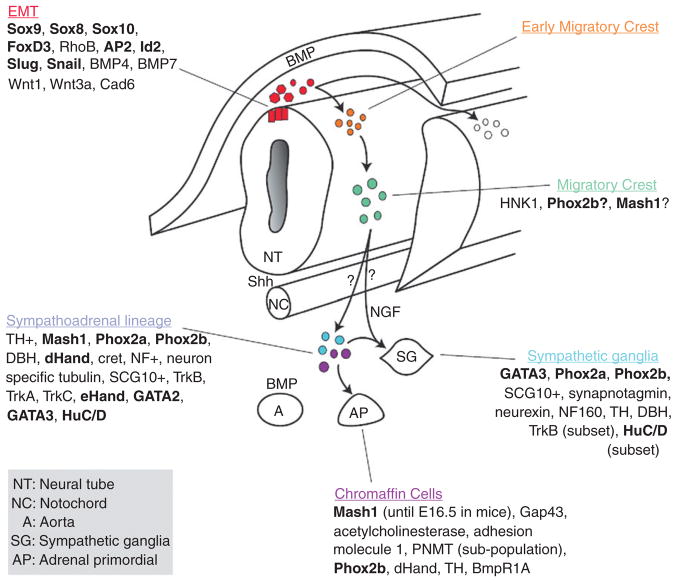Figure 4. 2.
General schema of the development of chromaffin cells and sympathetic ganglia. Cells at the dorsal region of the neural tube undergo EMT (red population), delaminate from the neural tube (orange), and migrate ventrally to the aorta (green) where they are commonly referred to as the sympathoadrenal progenitors (blue and purple). From the aortic region, the cells then migrate to the developing adrenal gland (AP) to become chromaffin cells or differentiate to become sympathetic ganglia (SG). As cells begin to differentiate as sympathetic ganglia they upregulate neural markers while chromaffin cells upregulate proteins found in the adrenal gland. Recent studies suggest that the chromaffin cell and sympathetic ganglia may come from divergent lineages rather than a common sympathoadrenal lineage. The question marks between the migrating crest and the sympathoadrenal progenitors address this possibility. A more detailed discussion on the temporal expression of the transcription factors in the sym-pathoadreanal lineage (including developmental stages) can be found in (Howard et al., 2000) and details about the distinct chromaffin and sympathetic lineages can be found in (Ernsberger et al., 2005). Additional of neurotrophins and their receptors can be found in (Straub et al., 2007). Transcription Factors are shown in bold and factors implicated in neuroblastoma have been underlined. Abbreviations: NT, Neural Tube; NC, notochord; A, Aorta; SG, sympathetic ganglia; AP, adrenal primordial.

